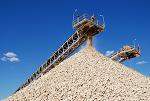 |
The Area being Modelled is :-
>Tracking Manufactured Items - in particular, Conveyor Belts.
The Draft Business Rules have been defined and are listed below.
From Declan on August 25th.
Hi All,
I hope someone can give me some advice/suggestions on how I should layout a database I have been working on for the past while.
I'm pretty much learning as I go along so bear with me.
I am trying to develop a database in SQL Server 2005 for tracking manufactured items on projects.
We manufacture conveyor systems and I am trying to track certain information for each manufactured item for sales and support purposes,
such as the motor/gearbox details, shaft details and belt details.
However, I have now come to a point where I have been stumped on how to best implement something.
We can use different physical belt types on a conveyor.
However the information that defines each belt type is different.
I'll try to explain better:
Belt Types:
1) Wire Mesh
2) Endless
3) Modular Plastic
I think I need to have a separate table for each belt type because the defining information is not common to all belt types but in relation to the actual conveyor, it is simply just a belt.
If the belt type is Wire Mesh then get the belt details from the Wire Mesh Belts table, or if the belt type is Modular Plastic get the belt details from the Modular Plastic Belts table and so on.
How should I setup a conditional relationship like this or is this something that I really need to deal with in my interface instead (VB2005 using ADO.NET 2.0 for data access).
A. DESIGN NOTES :
A.1 There are no Notes for this Design.
B. The Things of Interest, ('THINGS'), include :-
B.1 Belt Types
B.2 Conveyor Belts
C. These THINGS are Related as follows :-
C.1 A CONVEYOR BELT can be of one and only one BELT TYPE.
C.2 TBD
D. Other Characteristics of these THINGS include :-
D.1 TBD
E. Sample Data includes :-
E.1 To be determined
F. Typical Enquiries include :-
F.1 To be Determined
|



